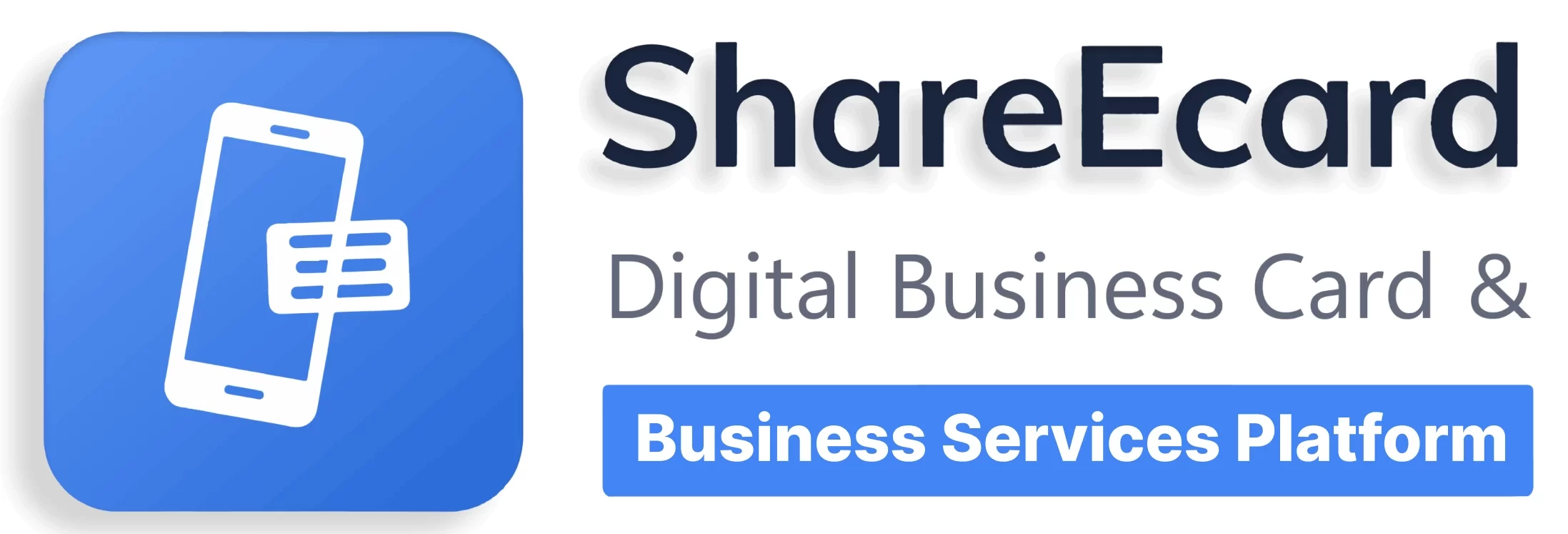In today’s rapidly evolving digital landscape, how we handle payments is undergoing significant transformation.
Digital cards, or virtual cards, have emerged as a modern payment solution offering convenience, security, and flexibility for businesses and individuals.
In this article, we’ll explore the various types of digital cards available, their benefits, and how they can revolutionize the payment process to make it more efficient and user-friendly.
What Is A Digital Card?

Digital or Virtual cards operate much like the conventional credit cards we’re accustomed to, but without the physical card. Instead, they provide a unique, one-time account number generated for a specific transaction with a designated supplier. These cards are exclusively created through online automated payment systems to ensure security and convenience.
Businesses of all sizes utilize virtual cards for various transactions, including online shopping, vendor payments, travel, and entertainment expenses. These virtual cards offer an electronic, disposable payment method that mirrors traditional credit cards, but shields the spender’s direct account details.
Each virtual card comes with a 16-digit number, a corresponding card security code, a short-lived expiration code, and a predetermined spending cap. Virtual cards enable “cardless” transactions while functioning like physical cards.
There are two primary formats in which service providers issue virtual cards:
Single-use cards: After completing the transaction, the account number becomes inactive, ensuring it can’t be used again.
Lodged card: This virtual card is linked to a specific seller and can be reused for transactions as long as they remain within established credit limits. Typically, these cards are used with trusted vendors or partners for recurring purchases.
Key Differences From Physical Cards
Limited Lifespan and usage: Virtual cards are typically single-use or have a limited lifespan, reducing the risk associated with prolonged card exposure compared to traditional cards.
Enhanced security features: Virtual cards offer traditional security controls, such as customizable spending limits and merchant category restrictions, providing better protection against unauthorized transactions.
Instant generation and accessibility: Virtual cards can be generated instantly and accessed from multiple locations, offering improved accessibility and flexibility compared to physical cards.
Types Of Virtual Cards
Virtual cards come in various types, each tailored to different needs and with unique features. Below are some of the most common types of virtual cards:
Virtual Credit Cards

Virtual credit cards are designed for online or digital use, offering transaction limits after which the card expires. Their dynamic nature provides added features, and users can employ virtual credit card apps to monitor expenses effectively.
Virtual Debit Cards

Linked to a user’s bank account, virtual debit cards enable transactions without requiring a physical card. They directly draw funds from the associated bank account, offering a secure and convenient online payment method.
Prepaid Virtual Cards

With predetermined spending limits, prepaid virtual cards are ideal for managing expenses, budgeting, and providing temporary solutions for online transactions.
Single-Use Virtual Cards

Also known as disposable or temporary cards, single-use virtual cards are generated for one-time transactions. Issued with a unique card number, CVV, and expiration date, these cards enhance security by becoming invalid after initial use, reducing the risk of fraud or unauthorized transactions.
Corporate Virtual Cards
Specifically tailored for business use, corporate virtual cards are issued to employees for authorized expenses like travel, accommodation, and other business-related transactions. They often feature spending limits, merchant category restrictions, and integration with expense management systems to streamline expense tracking and control.
This is different from digital business cards.
This digital representation of a business card includes contact information, company details, and branding. It is typically shared electronically through email, messaging platforms, or digital business cards.
You can design your very own digital business card here.

Virtual Gift Cards

Digital counterparts of traditional gift cards, virtual gift cards, can be purchased online and sent electronically via email or messaging. Recipients can use them to make purchases or redeem them for goods and services at participating retailers or online stores.
These examples represent just a selection of virtual card types available in the market. Specific offerings may vary depending on the financial institution, card issuer, or payment service provider.
Who Can Use Virtual Cards?
Virtual cards are versatile payment tools suitable for various individuals and organizations. Here’s a breakdown of who can benefit from using virtual cards:
Travelers:

Virtual cards are particularly useful for travelers who require a secure and convenient payment method while on the go.
If you are traveling to Australia, read this to learn how to use the popular digital card, the “Wise card”.
Businesses

Businesses of all sizes can leverage virtual cards for various transactions, including vendor payments, employee expenses, and online purchases.
Accounts Payable Departments

Accounts Payable Departments can streamline their payment processes by using virtual cards for vendor payments.
Everyday Use

Individuals can also use virtual cards for everyday transactions, such as online shopping, bill payments, and subscription services.
Where Can Virtual Cards Be Used
To determine if a vendor accepts virtual card payments, simply contact them or check their accepted payment methods. Most vendors that accept traditional credit or debit card payments are likely to also accept virtual cards.
Additionally, virtual cards can be added to digital wallets like Apple Pay or Google Pay for contactless payments, and some even allow for ATM cash withdrawals. Popular card issuers like Visa, MasterCard, Capital One, and American Express offer virtual card options, so it’s essential to understand the type of virtual card you have (single-use or lodged) to ensure its proper use.
Virtual cards offer many benefits that cater to various needs across different sectors.
How Do Virtual Card Payments Work?
Virtual card payments provide a secure and efficient method for conducting online transactions while protecting sensitive account information. Here’s a step-by-step explanation of how virtual card payments typically work:
Selection of provider: Virtual card services are generally offered by banks or financial institutions that also provide traditional debit or credit cards. Account holders can request the creation of virtual cards as a supplementary payment method to safeguard their personal account details during online transactions.
Invoice Approval: After approving an invoice, the accounts payable department or an automated ERP system shares the payment details with the virtual card provider.
Generation of Virtual Card: A one-time-use virtual card with specific controls, such as spending limits and merchant category restrictions, is generated. The virtual card details, including the card number, expiration, and CVV, are then sent to the supplier for payment.
Transaction Authorization: The supplier inputs the virtual card details into their point-of-sale system. Upon verification, they promptly authorize the transaction, making the funds available for the supplier.
Automated Reconciliation: The ERP system automatically matches the settlement data with the payment instructions, facilitating reconciliation on the buyer’s end. This streamlined process reduces manual efforts and errors in account payable operations.
Payment to Issuing Bank: The purchasing company adheres to the virtual card terms and pays the issuing bank for the transaction. By doing so, they retain their working capital.
Benefits Of Virtual Cards
There are multiple benefits, including security advantages, to using virtual cards.
Enhanced security
Virtual cards reduce the risk of fraud and exposure to sensitive information by using single-use or dedicated numbers for individual businesses. Even if compromised, the spending limit and short-term expiration date help minimize potential loss. Unlike traditional cards, virtual cards are not susceptible to physical theft, providing an additional layer of security.
Customizable Spending Limits
Users can set specific limits and merchant category restrictions for virtual cards, allowing for better control over expenses and preventing unauthorized purchases.
Streamlined Transactions
Virtual payments facilitate real-time account transfers, eliminating delays commonly associated with traditional payment methods. This enables vendors to strengthen their cash position and maintain accurate accounts.
Detailed Remittance
Virtual payments offer ample space for payment data, allowing for detailed transaction tracking by date, amount, or item. This feature expedites reconciliation processes for accounts payable teams more than wire transfers.
Improved Accessibility
Virtual cards can be generated instantly and accessed from multiple locations, eliminating the need to wait for physical cards to be mailed. This enhanced accessibility doesn’t compromise budgetary controls, as spending can be precisely limited.
Reducing Processing Fees
Virtual cards minimize manual workflows, reducing the likelihood of errors and delays. They also integrate well with automated accounts payable systems, reducing processing costs.
Financial Float and Early Payment discounts
Virtual cards offer up to 55 days of financial float, allowing for delayed payments without missing out on prompt payment discounts or incentives. This flexibility can significantly improve cash flow and reduce the need for short-term financing.
Easy Tracking and Recognition
Virtual cards simplify payment tracking and reconciliation by linking payments directly to specific transactions, invoices, and purchase orders.
Faster Recognition
Virtual card payments proceed faster than traditional paper-based payments, enabling quicker payments to vendors and potential early payment discounts.
Environmentally-Friendly
In today’s world, most companies prioritize CSR (Corporate Social Responsibility), which is the impact they have on society, environment, and the economy.
Compared to traditional physical cards, virtual cards reduce carbon footprint and are environmentally friendly, and therefore, an excellent choice for environment-conscious business entities.
For an understanding on how to calculate your company’s carbon footprint, read this.
In summary, while traditional purchasing cards may still suit certain transactions, virtual cards offer enhanced security, control, and reporting capabilities. They streamline operations, improve financial management, and provide flexibility, making them valuable assets for businesses, travelers, accounts payable, and everyday consumers.
Tips For Using Digital Cards
- Keep card details confidential and avoid sharing them through unsecured channels.
- Regularly check transaction history for unauthorized activity and use real-time alerts for updates.
- Utilize customizable spending limits to control expenses and maintain financial discipline.
- Only use your virtual card on reputable and secure websites or platforms.
- Activate two-factor authentication to prevent unauthorized access.
- Update device and security software regularly to protect against vulnerabilities.
- Link your virtual card to secure digital wallets like Apple Pay or Google Pay for enhanced security.
- Familiarize yourself with card terms, fees, and restrictions to make informed decisions.
Conclusion
In conclusion, digital cards offer businesses and individuals streamlined, secure, and efficient payment solutions. Their customizable features, real-time tracking, and seamless integration with existing systems make them valuable assets in today’s digital economy.
By simplifying payment processes and enhancing financial security, digital cards are shaping the future of payments, providing a convenient alternative to traditional methods.
FAQs
- Can Virtual Cards Receive Payments?
Virtual credit cards are typically not designed to receive money. They are primarily used for making purchases.
- Can Virtual Cards Be Used For Subscriptions?
Yes, using a virtual card number can make online transactions, including subscription services, safer and more secure.
- Are Virtual Cards Accepted Everywhere?
Virtual cards are primarily designed for online purchases and can also be used for certain over-the-phone transactions.
- Can Digital Cards For Business Travel Be Used Internationally?
Yes, virtual cards for businesses can be used internationally, offering a convenient payment solution for your travel expenses.



